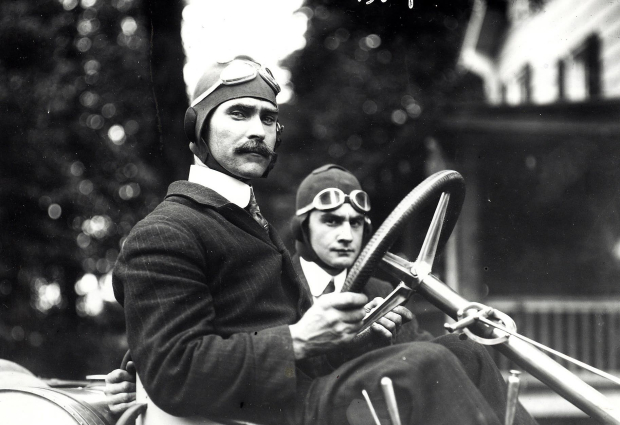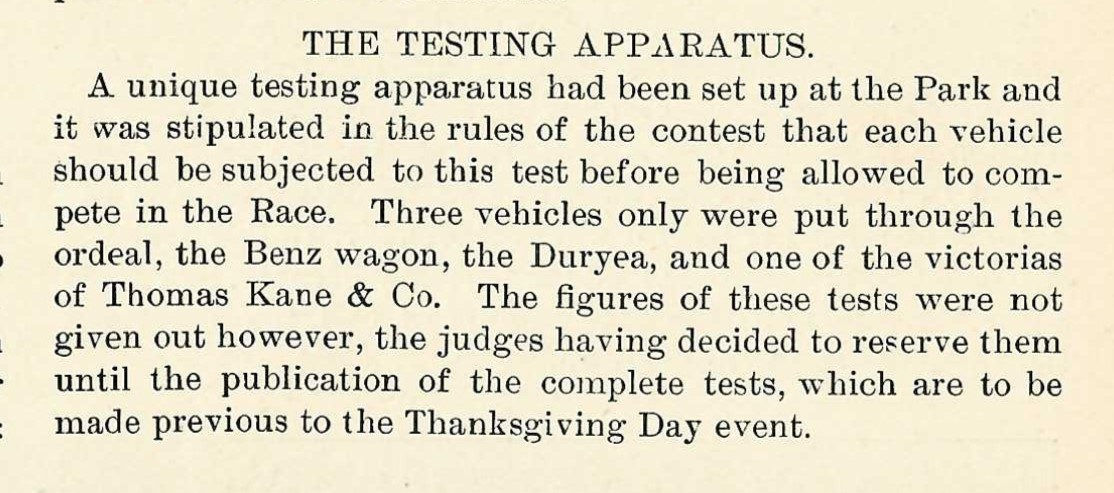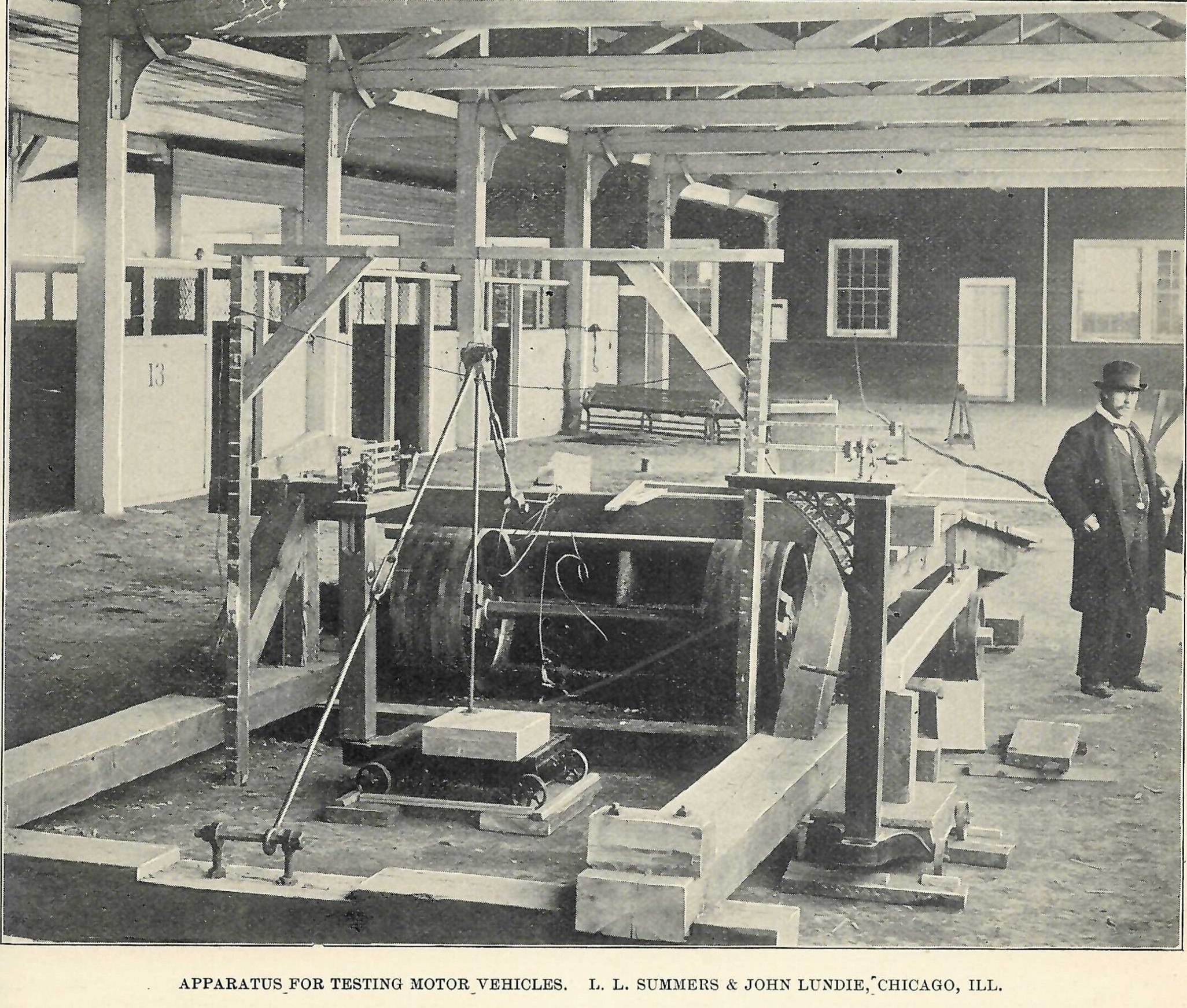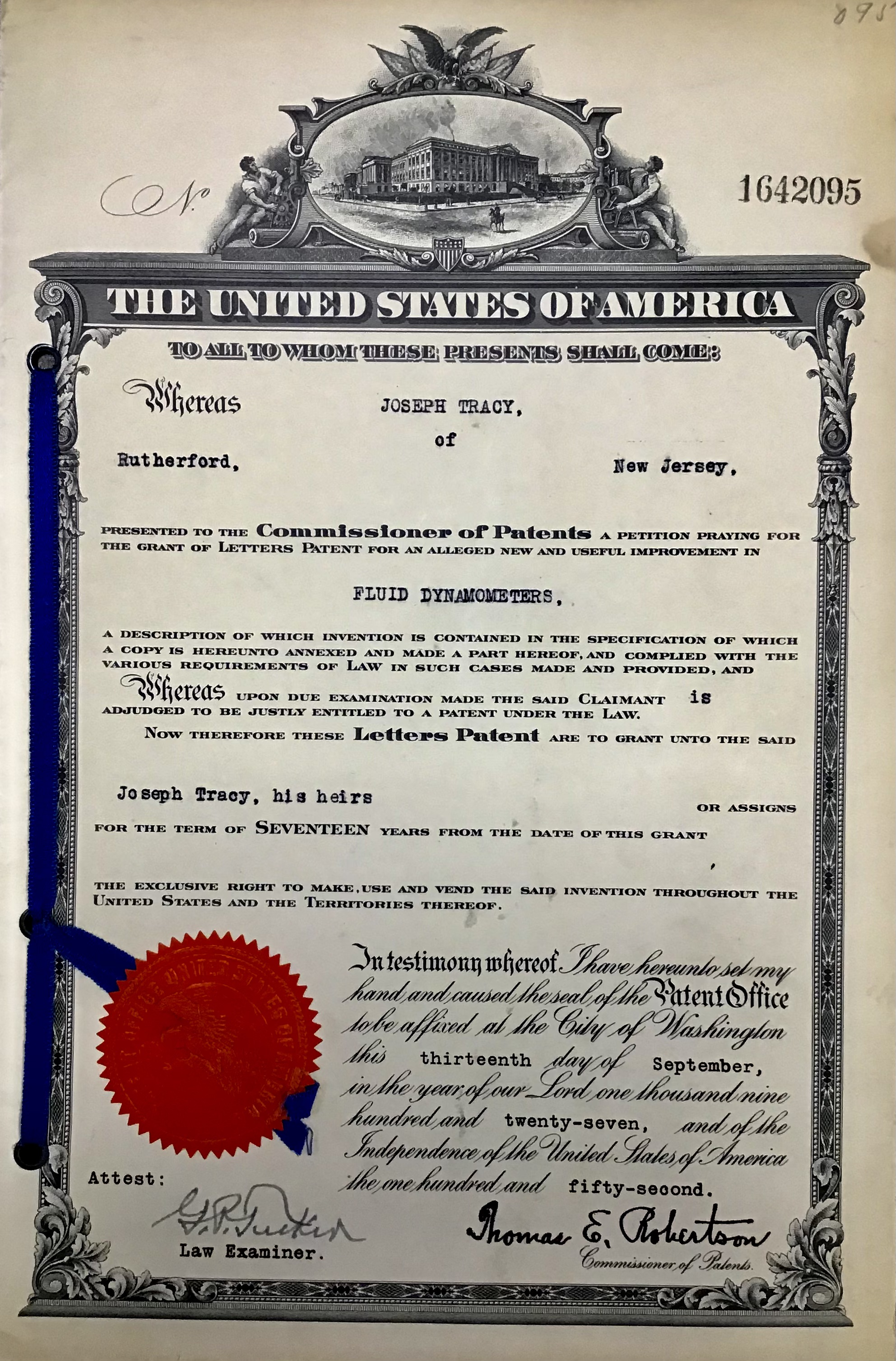Greg O’s Garage; Joe Tracy’s Patents

Aside from being a talented race car driver in the early Vanderbilt Cup Races, Joe Tracy was also a brilliant engineer and inventor.
Found in the Helck Family Collection are Tracy's four original U.S. Patents, and one Canadian Patent for advancements in dynamometer designs.
Greg O.

The first official automobile race on U.S. soil was the Chicago Times-Herald Race held on November 28th, 1895.
As described in the 2nd issue of 'Horseless Age' in December 1895, rules stipulated that each vehicle be tested on an apparatus called a dynamometer.

A Dynamometer, (or 'Dyno' for short) is a device to determine power and torque of the 'power motivator'. In the case of the automobile, its engine. Dynamometers can be used in many other applications in many different forms, but for most modern car enthusiasts, they envision the rolling chassis type of dynamometer. A chassis dyno has a set of friction rollers that the car drives upon that the driving wheels turn to emulate a street/track driven automobile and determine horsepower and torque output for the entire drivetrain. There are other dynos that connect directly to the engine, but there is a horsepower loss when the rest of the drivetrain is included. So, to determine the exact horsepower where the rubber meets the road, a full rolling chassis dyno is necessary. It was, and is, a critical component for engine and chassis tuning 128 years ago as it is to this very day. Their basic operation has not changed much in 100 years, but from 1910 through 1934, Vanderbilt Cup driver and engineer, Joe Tracy, felt he can make some improvements to the testing apparatus.
This 1895 Horseless Age photo of the Chicago race chassis dyno clearly shows the rollers that most modern auto enthusiasts would recognize.
Joe Tracy was brilliant engineer, and as such, was one of the original members of The Society of Automobile Engineers started by Henry Ford & Andrew Riker among others in 1905.
These 5 patents shown here are not all of his patents, there were others. For instance, in 1902, he obtained a patent on an automatic igniter for automobile engines, and in 1910, he invented, manufactured and sold fan and reaction dynamometers for testing engines. Those were not included in the Helck files, so for this post, we'll look at just these five.
For those interested in the more technical aspects of Tracy's impressive dyno improvements, I have provided a link displaying all descriptions and drawings of his work.

Patent #1642095 Sept. 13th, 1927
Fluid Dynamometer

Patent #1704412 March 5th, 1929
Gaseous-Fluid Dynamometer

Patent #1743409 Jan. 14th, 1930
Balanced Fluid Dynamometer

Patent #1944334 Jan. 23rd, 1934
Apparatus For Making Accurate Dynamometric Determinations

U.S. patents only protect the inventor's intellectual property within the United States. If the inventor wants international protections, they must apply within that country. Here, Tracy felt his patent important enough that he apply it with the Canadian Government as well.
Canadian Patent #302961 Aug. 12th, 1930
Fluid Dynamometer
The 1962 HolmanMoody Ford Falcon Challenger III on a modern chassis dynamometer at Ida Automotive
Tucker #1044 prior to restoration on the dyno at Ida Automotive






Comments
HAPPY FATHERS DAY!!!
Over time, lots of patents have been issued. Some have turned out to be useful, a few, extremely useful. And memorable.
My dad, who was a SAE member, would have enjoyed this article, and many others here. He had his own impact on the auto industry in the 1950’s, designing car hauling trailers that were based on aeronautical engineering concepts - specifically a very strong, light framework, which greatly reduced the weight of such trailers (https://www.flickr.com/photos/carhaul/4088953465).